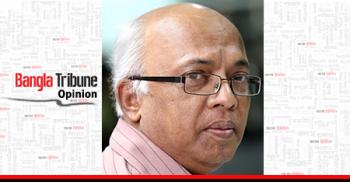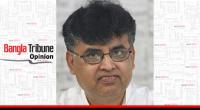 The history of regional political associations in our times has largely been a series of disappointments. Begin with the Bay of Bengal Initiative for Multi-Sectoral Technical and Economic Cooperation (BIMSTEC), a relatively new organisation based on the interests of nations linked to the Bay of Bengal. When it came into existence in the late 1990s, not much of optimism was associated with it. Even so, it was welcomed as a rather good initiative that could throw up some dividends for its member-states. That somehow does not appear to have happened. At the recent summit of BIMSTEC heads of government in Kathmandu, where teams from both Bangladesh and Myanmar happened to be present, absolutely no mention was made of the Rohingya issue.
The history of regional political associations in our times has largely been a series of disappointments. Begin with the Bay of Bengal Initiative for Multi-Sectoral Technical and Economic Cooperation (BIMSTEC), a relatively new organisation based on the interests of nations linked to the Bay of Bengal. When it came into existence in the late 1990s, not much of optimism was associated with it. Even so, it was welcomed as a rather good initiative that could throw up some dividends for its member-states. That somehow does not appear to have happened. At the recent summit of BIMSTEC heads of government in Kathmandu, where teams from both Bangladesh and Myanmar happened to be present, absolutely no mention was made of the Rohingya issue.
That was a surprise, given that the Rohingya problem has been exercising minds around the globe and especially in Bangladesh for months. But, of course, the secretary general of BIMSTEC did not see it that way. His explanation for the lapse was naïve at best and impolitic at worst. The Rohingyas did not come up for discussion, he informed the media because the agenda for the summit had already been prepared by the Nepalese government. And, of course, he paid tributes to the Bangladesh and Myanmar governments for, in his words, the maturity they demonstrated by not raising the issue in Kathmandu. In the end, the BIMSTEC summit ended up, like so many others we have lately had cause to be witness to, as yet one more social gathering of leaders of the member-nations of the organisation. Regional politics were kept off the table.
Speaking of social interaction, one is reminded of SAARC. The organisation, which emerged with a high degree of promise in South Asia in the mid-1980s, was in subsequent years to suffer from a malady that had to do with the nature of its birth. The charter of the organisation precluded any discussion of bilateral issues, which quickly led to circumstances where hardly anything of substance could be achieved by it. Of course, there were the frills of trade and talk of easier people-to-people contact and turning the region into a conflict-free zone and other inanities. On substance, because of the narrowness of the SAARC charter, nothing of consequence has changed in South Asia. Pakistan and India are yet caught up in bellicosity toward one another; relations between Bangladesh and Pakistan have consistently remained terrible, and India-Nepal issues have never been touched upon. And, to be sure, at this present time, SAARC barely breathes, its last summit in Islamabad having been aborted through the refusal of some member-states to take part in it.
The question, then, is patent: do regional organisations bringing countries together really serve any practical purpose? One recalls the fanfare with which the Shah of Iran, Pakistan’s President Ayub Khan and Turkish President Kemal Gursel launched the Regional Cooperation for Development (RCD) in 1964. The organisation demonstrated a good deal of frenetic activity, much of it more a show of energy than a true working out of a strong union among the three countries until it passed away quietly by the time the 1970s arrived. But, yes, there have been organisations which have done pretty well for themselves. The instance of ASEAN, formed in 1967, is there. Despite the many permutations and combinations which have transformed the globe in so very many ways since then, ASEAN has remained in quite good health.
But that was not to be the case with the Central Treaty Organisation (CENTO) and South East Asia Treaty Organisation (SEATO), which were brought into being in the 1950s but began to peter out by the mid-1960s. These two bodies died natural deaths, for their entire reason for being, one formulated in Cold War-era Washington in the 1950s, was a need to contain communism in our part of the world. In simple terms, countries which teamed up with the United States in this badly ambitious programme of checking and defeating communism were guided by thoughts of American largesse and false ideas of socialist principles undermining democracy around the world. An inescapable irony steeped in the working of CENTO and SEATO was the image of many of their member-nations groaning under the weight of authoritarian governments. It was no surprise, therefore, that when these two bodies breathed their last, it was essentially good riddance to bad rubbish.
But the Warsaw Pact was not rubbish, at least not in ensuring the creation of a socialist community of nations in Eastern Europe as a bulwark against what was seen as the machinations of the North Atlantic Treaty Organisation (NATO). But the reputation of the Warsaw Pact was considerably marred when soldiers from its member-nations marched into the territory of one member-nation, Hungary, in 1956 to violently put down a revolt by the government of Prime Minister Imre Nagy. The results were deeply disturbing. Nagy was executed and his hardline, pro-Soviet successors went on to tighten their grip on the country in full obedience to the dictates of the Soviet leadership. Warsaw Pact states repeated their blunder when tanks and armoured vehicles from member-states rolled into the territory of another member-state — and this time it was Czechoslovakia — in August 1968 to put down what Alexander Dubcek had cheerfully termed Prague Spring.
Not all regional organisations are an emulation of the European Union which, despite the British decision to opt out of it, remains an enterprise deeply rooted in a commonality of interests which its twenty seven member-nations are not about to jettison any time soon. The EU thus remains healthy in form and substance.
One could argue that the Organisation of Islamic Cooperation (OIC) approximates the EU in bringing nations together. That would be a misplaced conclusion, for the OIC has progressively dwindled into a body with much bombast and little substance. Doesn’t that remind you of the deceased Organisation of African Unity (OAU)?
Syed Badrul Ahsan is the editor-in-charge at The Asian Age


